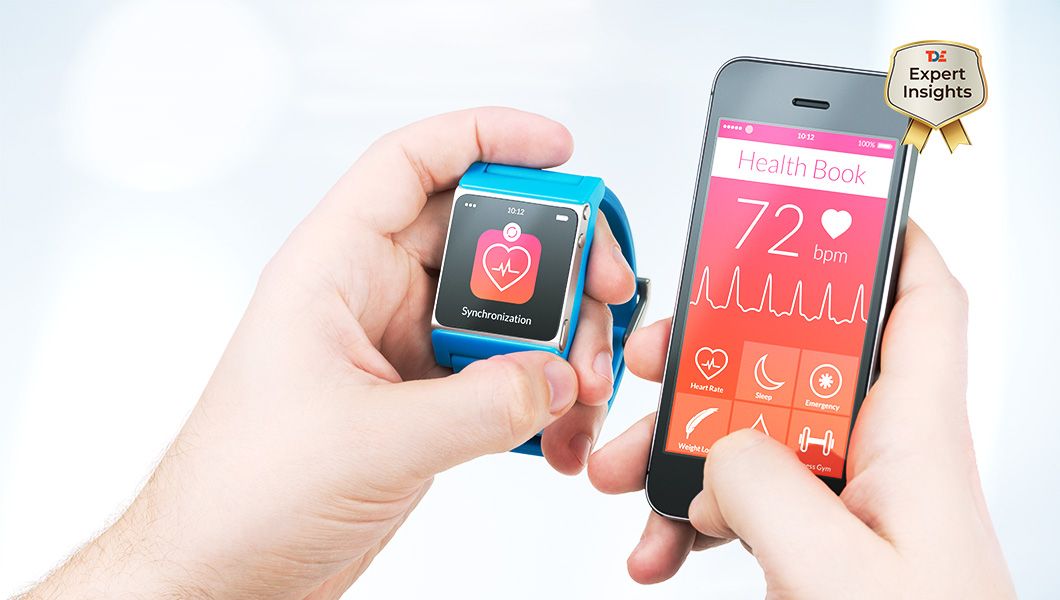How Wearable Technology Will Hold Patients More Accountable

Wearable technology is a booming market but who is benefiting most? Maxime Croll, Product Manager at ValuePenguin dives into the pros and cons of wearables including what it means for health professionals and insurance companies to have real time data on their patients, showcasing what their habits really look like
Telemedicine, or the ability for health care professionals to diagnose and treat customers remotely, is changing the way we get medical care. One major contribution to the shift is the increased popularity of wearable technology like fitness trackers and smartwatches. Accenture, a professional services company, found that wearable use jumped from just 9% in 2014 to 33% in 2018, with three-fourths of respondents claiming they provide beneficial insight into their health.
With technology becoming more and more sophisticated, wearables can now track everything from sleep habits to blood sugar levels. Funneling that data back to health care providers can help make the practice of telemedicine both more common and more comprehensive. But advanced insight into daily habits means consumers may be held more accountable for their health than ever before.
The past and present of wearables
From its very early history, humanity has tried to harness available technology as a means to monitor and treat their health. While wearable technology technically includes everyday aides like glasses, pacemakers and hearing devices, today’s new wearable tools often contain sensors that gather and track biometric data. These include:
- Fitness trackers: These devices, including the Fitbit and smart clothing, can track and store a wearer’s sleep, calorie outlay, exercise, heart rate and more.
- Ingestible: FDA-approved pills that monitor a user’s heart rate, medication ingestion, movement and more.
- Remote sensor systems: Wearables that connect to an offsite system and monitor blood sugar levels, activity level, respiration, heart performance, and other physiological data.
Wearable worries
But for every pro, there’s a con, with the following concerns weighing on health care professionals and consumers:
- User and data privacy: The electronic information stored on a fitness tracker and other wearable devices is not covered by HIPAA. Therefore, HIPAA authorization isn’t required before sharing it. This not only leaves users vulnerable to privacy concerns, but also to the sale of their most personal information. In 2016, The New York Times reported that Nike had inked an agreement with the University of Michigan to gather personal data recorded by wearables worn by the school’s football team. These devices also leave users vulnerable to hacking, which could result in falsified data that then impacts insurance rates, treatment decisions and more.
- FDA approval: For patients and health care providers, concerns around FDA approval are vast. Few devices have FDA approval for diagnostics, treatment or mitigation of health problems. And those that are designated for general wellness aren’t regulated by the FDA at all. Some devices, like the Apple Watch 4, have gotten FDA approval, but only for a limited number of their overall functions.
- Accuracy: Studies of wearable technology have shown that devices have a range of error margins in the data they monitor, including heart rate and calorie burn. While some devices may be more accurate than others, even a small error rate can negatively impact treatment, potentially scaring patients and doctors away from telemedicine and getting virtual care
- Insurance: When it comes to insurance, wearables can decrease rates — but they can also raise them. These devices give insurance companies access to information they otherwise might not have, and that can have a positive or negative impact on policyholders. Before opting for an insurance plan that incorporates wearables, consumers should shop around for rates and plans that are best suited to their current lifestyle, and how much information they are willing to share.
- Consistency: Wearables are only going to help patients when they are worn, and that may not always be consistently happening. A study from 2018 found that 32% of wearable users in 2018 had discontinued use of their devices. The majority said it was because they found recharging a hassle, and close behind that was the issue of discomfort.
Embracing wearables
Wearable technology is on the rise and caters to the needs of both consumers and professionals.
- Consumers: Like a mechanic lifting the hood of a car, patients want to peek underneath their skin and get to know more about their bodies. Wearables give them irrefutable data regarding their activity level and general health, empowering them to change their habits and embrace a healthier lifestyle. Many users have noted that trackers are helping them improve their stress levels and their sleeping habits and helping them stay in shape.
- Health care professionals: The health care community also sees the value in telemedicine and wearable technology. In 2018, the American Medical Association released its Digital Health Implementation Playbook to medical professionals. This 102-page guide covers the topic of integrating wearable technology and remote patient monitoring into a health care practice. Among the benefits it notes is the ability to manage chronic conditions like Chronic Obstructive Pulmonary Disease (COPD), asthma and diabetes by breaking down the barriers of visibility into a patient’s everyday life, giving more options for realistic treatment based on the truth of a patient’s lifestyle.
- Insurance companies: When it comes to insurance, wearables offer some compelling benefits. They can increase the accuracy of rates by tailoring charges based on real-time data on applicants, which can prompt discounts for individual coverage and group coverage. This is something that’s been happening in the auto insurance industry, where usage-based insurance rates increase an insurer’s ability to evaluate a driver’s risk. Wearables may also stimulate incentives from insurance companies and employers, offering users further motivation to become more active and healthier, and further lowering health care costs. Lastly, as the auto insurance industry has noticed, tracking actual policyholder behavior can help increase the speed of claims processing. With wearables, this may mean better validation of workers compensation claims and other damages that businesses and employers could be liable for.
Wearables are becoming so important to insurers that one company, John Hancock, announced that it would only be selling life insurance policies that were “interactive” and able to track fitness and health data through a policyholder’s wearable.
The future of wearables and health care
While no one can predict where the future of wearables and health care might lead us, there are exciting projects on the horizon, from full-body smart suits that aide in physical therapy and injury recovery to smart bandages that monitor wound status, detect bacteria and infection, and notify patients and doctors when additional treatment is needed.
Whatever the future brings, patients and consumers need to stay aware of the benefits, limitations and potential consequences of this tech to determine just how much information they’re willing to share.


 By
By 








